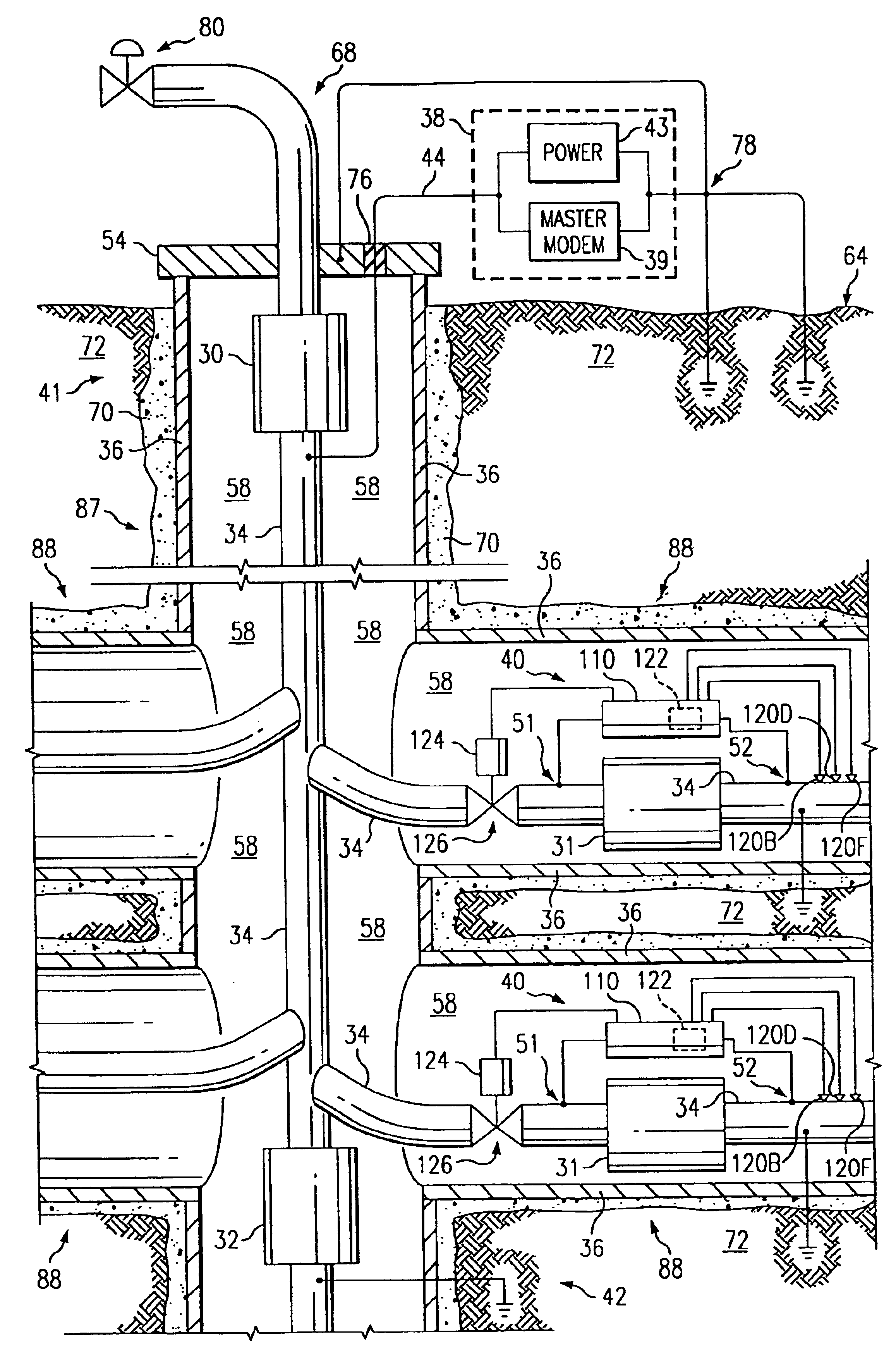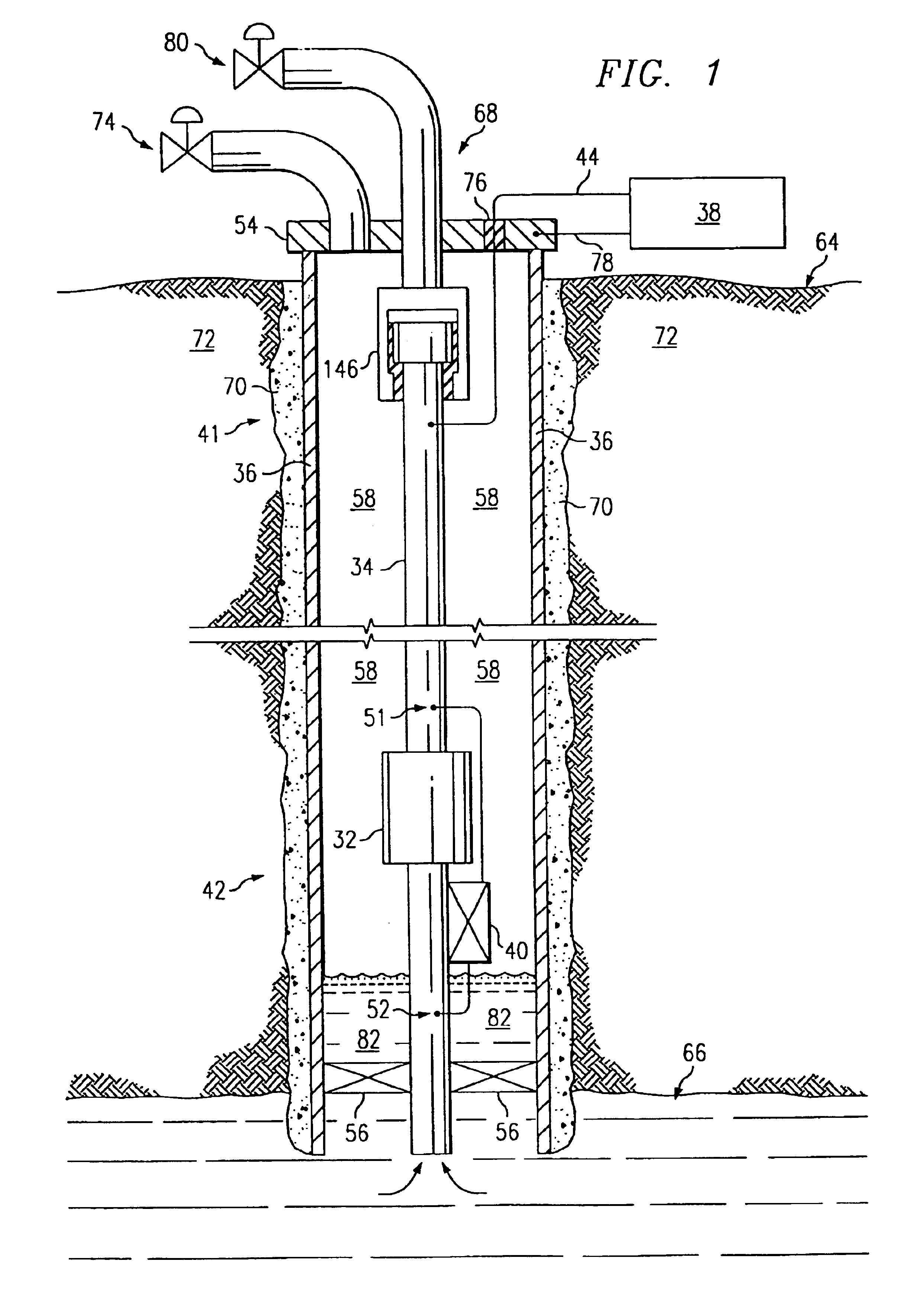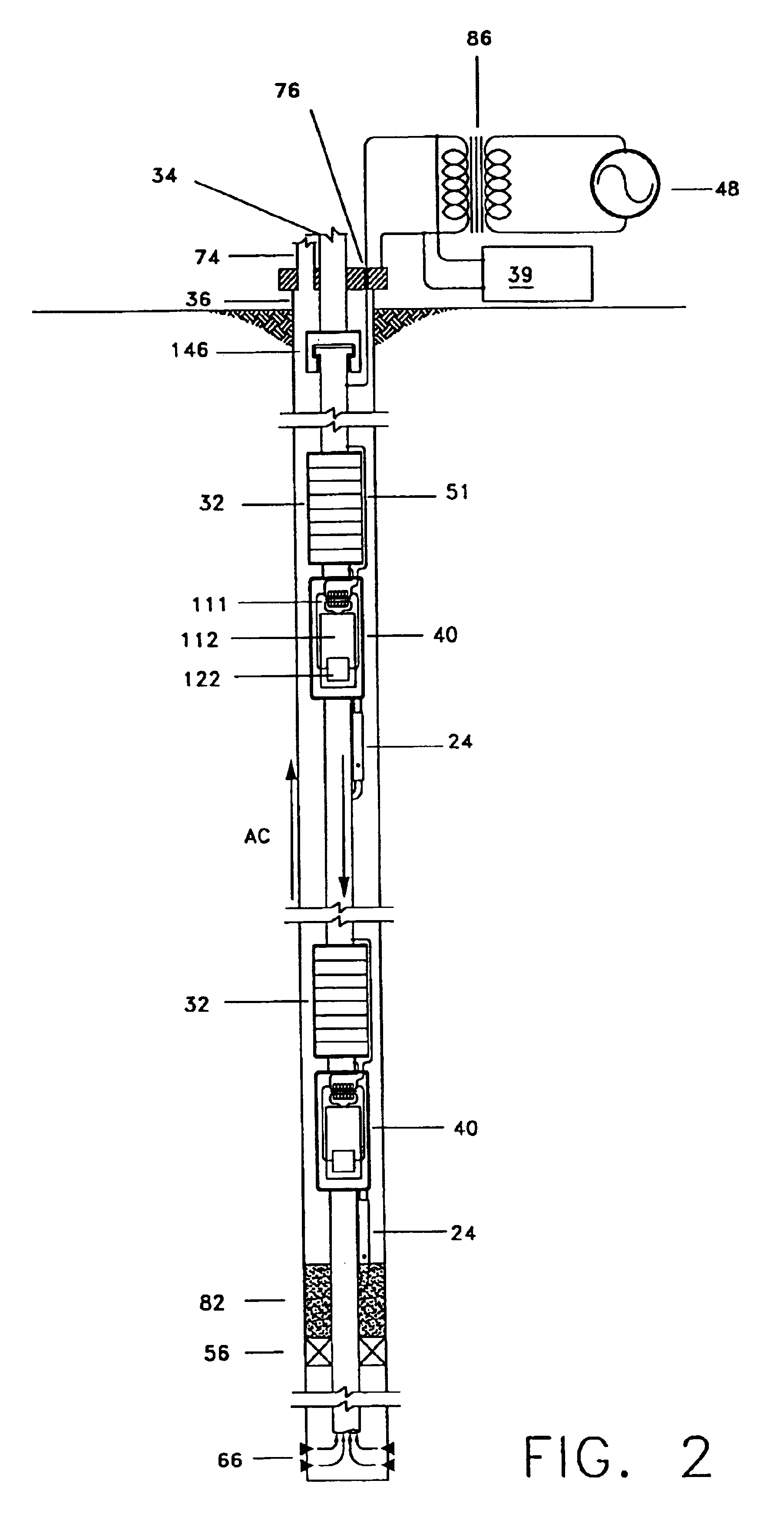Permanent downhole, wireless, two-way telemetry backbone using redundant repeaters
a two-way telemetry and repeater technology, applied in the field of permanent downhole, wireless, two-way telemetry backbone using redundant repeaters, can solve the problems of bellows-type gas-lift valve, excessive kick off pressure, rare in practice,
- Summary
- Abstract
- Description
- Claims
- Application Information
AI Technical Summary
Benefits of technology
Problems solved by technology
Method used
Image
Examples
first embodiment
[0049]In the first embodiment shown in FIG. 1, the piping structure comprises a production tubing string 34 for a well, which is typically steel tubing. The system has an electrical impeding device 146 located about the tubing 34 along a first end 41 near the surface. Device 146 may consist of an electrically insulating joint as shown in FIG. 1, or an unpowered choke of the present invention. A lower choke 32 is located about the tubing along a second end 42 downhole within the well. Surface equipment 38 comprises a power source to energize downhole equipment, and a computer-controlled modem to send and receive commands and data to downhole equipment. Power and communications signals are output from surface equipment 38 as time-varying currents and are electrically connected to the tubing 34 between the impeding devices 146, 32 using connectors 44 and 78. The time-varying current can be alternating current (AC) or a varying direct current (DC), but AC is typically more practical in ...
third embodiment
[0115]Other types of configurations are contemplated. For example, FIG. 9 shows a multilateral petroleum well application of a third embodiment in accordance with the present invention. In a multilateral completion shown in FIG. 9, the tubing 34 is used as a conductor for power and communication signals, and the earthen ground is used as an electrical return. A controllable valve 126, a downhole spread spectrum modem 122, and sensors 120 are placed in each lateral. The main borehole 87 branches into four laterals 88. The source 38 comprises a computer system having an AC power supply 43 and a master modem 39. As long as a time-varying current is output to the electrical circuit, the source 38 may comprise any variety of electronic components, including but not limited to: a computer system, a modem, a power supply, a software program for analyzing data, a software program for controlling downhole devices, or any combination thereof. Redundant relay modems (not shown) can be included...
PUM
 Login to View More
Login to View More Abstract
Description
Claims
Application Information
 Login to View More
Login to View More - R&D
- Intellectual Property
- Life Sciences
- Materials
- Tech Scout
- Unparalleled Data Quality
- Higher Quality Content
- 60% Fewer Hallucinations
Browse by: Latest US Patents, China's latest patents, Technical Efficacy Thesaurus, Application Domain, Technology Topic, Popular Technical Reports.
© 2025 PatSnap. All rights reserved.Legal|Privacy policy|Modern Slavery Act Transparency Statement|Sitemap|About US| Contact US: help@patsnap.com



